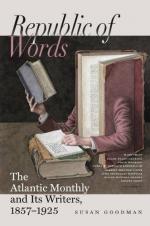Virtually, the Roman orders died in the first century of the Christian era. We all know how, when the authority of the Pagan schools was gone and the stern Vitruvian laws had become lost in the mists of antiquity, these orders gradually fell from their strict allegiance, and imbibed a new and healthy life from that rude but earnest Romanesque spirit, as in Byzantium and Lombardy. And we know, too, how, in after Gothic times, the spirit of the forgotten Aphrodite, Ideal Beauty, sometimes lurked furtively in the image of the Virgin Mary, and inspired the cathedral-builders with somewhat of the old creative impulse of Love. But the workings of this impulse are singularly contrasted in the productions of the Greek and Mediaeval artists. Nature, we have seen, offered to the former mysterious and oracular Sibylline leaves, profoundly significant of an indwelling humanity diffused through all her woods and fields and mountains, all her fountains, streams, and seas. Those meditative creators sat at her feet, earnest disciples, but gathering rather the spirit and motive of her gifts than the gifts themselves, making an Ideal and worshipping it as a deity. But for the cathedral-builder, Dryads and Hamadryads, Oreads, Fauns, and Naiads did not exist,—the Oak of Dodona uttered no oracles.
“A primrose by the river’s
brim
A yellow primrose was to him,
And it was nothing more.”
To him Nature was an open book, from which he continually quoted with a loving freedom, not to illustrate his own deep relationships with her, but to give greater glory to that vast Power which stood behind her beautiful text and was revealed to him in the new religion from Palestine. He loved fruits and flowers and leaves because they were manifestations of the Love of God; and he used them in his Art, not as motives out of which to create abstract forms, out of which to eliminate an ideal humanity, but to show his intense appreciation of the Divine Love which gave them. Had he been a Pantheist, as Orpheus was, it is probable he would have idealized these things and created Greek lines. But believing in a distinct God, the supreme Originator of all things, he was led to a worship of sacrifice and offerings, and needed no Ideal. So, with a lavish hand, he appropriated the abundant Beauty of Nature, imitating its external expressions with his careful chisel, and suffering his sculptured lines to throw their wayward tendrils and vagrant leaflets outside the strict limits of his spandrels. The life of Gothic lines was in their sensuous liberty; the life of Greek lines was in their intellectual reserve. Those arose out of a religion of emotional ardor; these, out of a religion of philosophical reflection. Hence, while the former were wild and picturesque, the latter were serious, chaste, and very human.




